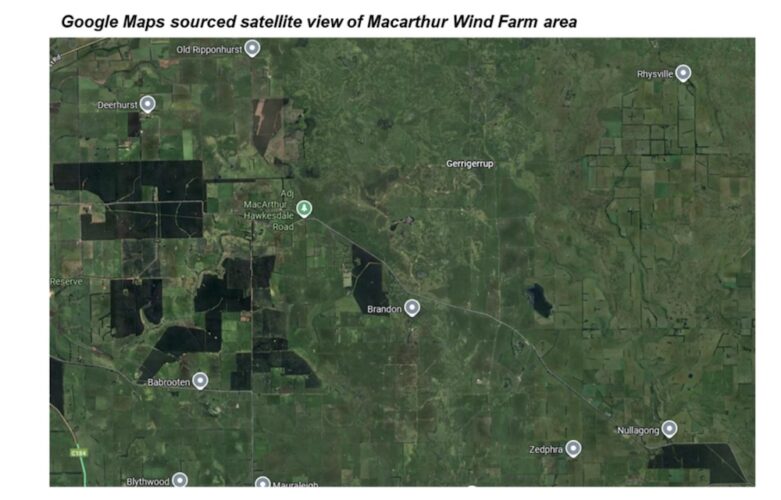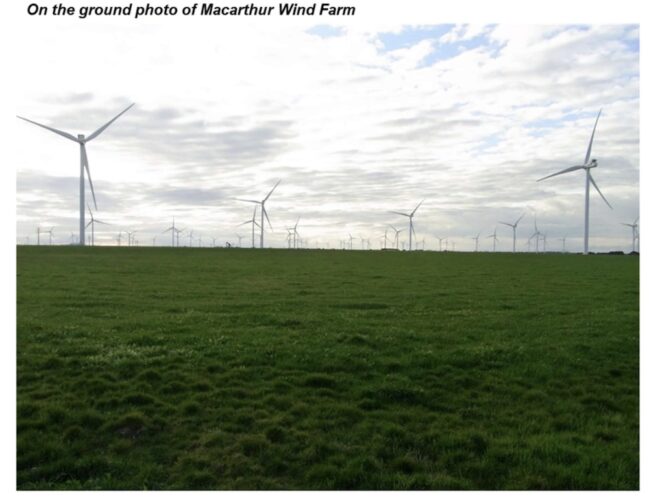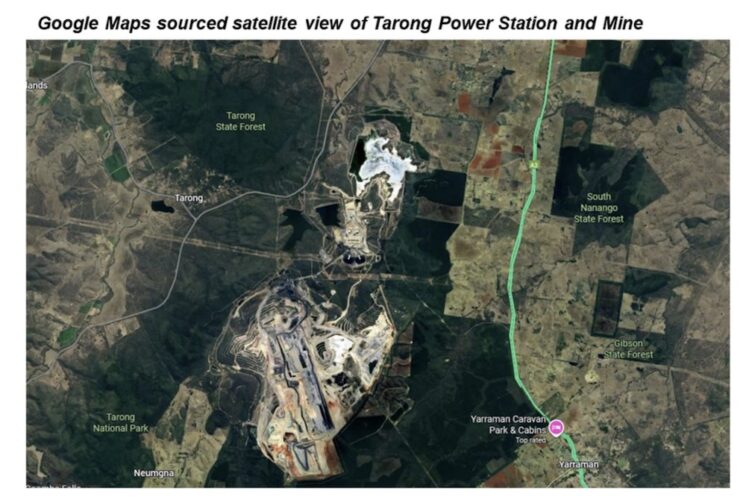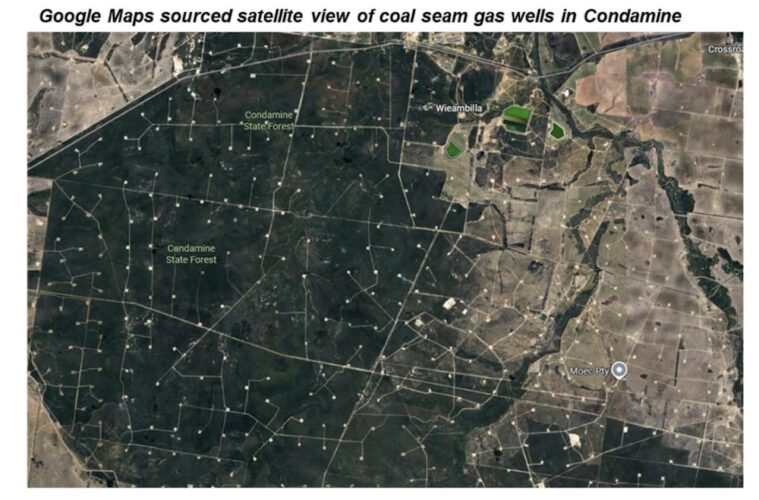Big Green Lies: Are renewables really “tearing up” agricultural land?

Willogoleche wind farm
Tristan Edis
Oct 20, 2025
Commentary
Today I’ve started what will become a series of articles entitled Big Green Lies.
What has prompted this series is the sheer scale of bullshit out there about renewable energy and alternatives to fossil fuels, more broadly.
It’s even told to me as fact from people who I would consider to be seriously concerned about climate change. I even hear some of this bullshit amplified by people who work in the renewable energy sector.
For my first column, I’d like to focus on claims that the roll-out of renewable energy is tearing up the Australian landscape and seriously undermining farmers ability to grow our food.
In particular I’d like to focus on a press release issued by the leader of the Nationals Party leader David Littleproud on 30 September entitled, Shocking renewables report sends alarm bells.
In this press release Littleproud references an online map (which he refers to as a ‘report’) of operating and proposed renewable energy projects published by an organisation called Rainforest Reserves Australia.
In this press release Littleproud states:
The environmental and agricultural impacts of the policy [Labor’s renewable energy plans] demonstrated in the report are also real, with over 400,000 hectares of landscape destroyed, tearing up native habitat and prime agricultural land….“We’re not only tearing up Australia’s food security, we’re tearing up the thing we’re meant to be protecting – the natural environment.
He followed this up with an interview with the 2GB radio program where he explained that what the map showed was that the roll-out of renewable energy was “frightening”. This was echoed by his National Party colleague Colin Boyce who said, “This is going to have an enormous impact on the geography of the wider Australian landscape.”
So what does this map show?
When you visit the website you are immediately confronted with the opening image below showing large swathes of land filled with yellow, orange and green blobs which apparently represent the land area occupied by operating and proposed wind and solar farms. I can imagine that this would indeed be disturbing to many people.

What’s quite alarming is it’s not just farms that will be “torn-up” by turbines, but also major regional towns housing tens of thousands of people. Port Augusta in South Australia, Bunbury in WA, Warrnambool, Portland and Mildura in Victoria, Armidale in NSW and Gladstone in Queensland look set to be overwhelmed by wind farm yellow blobs.
However, for residents of those towns you can rest easy, because there is a misleading error within this mapping tool – it vastly exaggerates the land area of many renewable energy projects up until you reach the very final point in its zoom-in function. Essentially the land area taken up by the wind farm blobs fails to adjust properly and dramatically expands as you zoom out.
To help illustrate the point, let’s zoom in a bit more to the Macarthur Wind Farm, which was up until a few years ago the largest operating wind farm in the country.
The picture immediately below is extracted from the Rainforest Reserves Map after zooming in a bit, although not completely , with the orange dots purportedly illustrating the land area taken up by the turbines of Macarthur Wind Farm. While not quite as scary as the first picture, it suggests a very large proportion of farmland taken out of production.

By comparison below is a satellite picture as shown in Google Maps of exactly that same area of land, at exactly the same scale. If you squint really hard you might be able to make out some tiny round white dots with access roads between them – this is the actual area taken up by the turbines.
If you visit the wind farm, as I have, you’ll find an area dominated by plentiful lush grass where cows and sheep graze happily between turbines which take up a tiny fraction of the farm land.

To help prove the point, below is an on the ground photo taken of the Macarthur Wind Farm site. Yes, the turbines are very visually prominent, but they co-exist within a farm that very clearly remains predominantly made up of grass.

Now while we regularly hear National Party MPs cry out in horror at the apparent damage these wind turbines are doing to farms and forests, we strangely hear very little from them about coal and gas mines.
To help illustrate why this is strange, below is an image of the Tarong Coal Power Station at exactly the same resolution (covering the same amount of land area) as I used for Macarthur Wind Farm. The white and grey area is where the coal mine and power station have eaten into the surrounding forest shown in dark green.

As another example below is an image of the Loy Yang Coal Power Station Complex in Victoria, again at the same scale as used for Macarthur Wind Farm aerial image. You can clearly see how the light brown and black area of the mines have eaten into the surrounding farm land, creating a barren void.

As one further example of the oddly inconsistent approach of the National Party to landscape impacts, below is an aerial picture of a small sample of coal seam gas wells located in David Littleproud’s own electorate of Maranoa, at exactly the same scale as shown for the Macarthur Wind Farm.
In this case there is no need to squint to see the white dots of gas wells with access roads between them.

This is just one small example of the gas well-potted landscapes that extend over large areas within David Littleproud’s electorate.
So it is very weird that the National Party is outraged about the impact of renewable energy on farmland while its members cheer on coal and gas extraction. But there’s actually something even weirder at work given the National Party like to claim to be the political party representing farmers.
Farmers have complete control over whether or not they host wind or solar power projects on their land. And the amount of money they are paid to host these projects is in many cases life changing, representing income many times greater than anything they might lose from the loss of farming land.
According to the Clean Energy Council an approximate guide for the amount of money a farmer is paid for each wind turbine on their land is around $5,500 to $6,500 per megawatt each year.
These days the typical turbine is around 5 megawatts (MW), so that’s $27,500 to $32,500 per year per turbine. And the vast majority of the farmer’s land will be unaffected allowing them to continue to run their farming enterprise.
Farmers also receive payment for gas wells and coal mines on their land. But there’s a critical difference – they don’t have a right to refuse these developments.
In essence they are forced to negotiate with mining corporations with one hand behind their back because Australian laws treat resources below the land as property of the state, not the landholder.
Also the payments farmers are entitled to receive are structured around compensating them for losses, not making them substantially better off. As an analogy it’s like being told that you’re being forcibly evicted from your own home which will be razed to the ground, but not to worry because they’ll pay you market value for the home plus a bit extra to cover rent and inconvenience while you find another house.
Farmers have far greater negotiating power in relation to renewable energy projects and so can get a vastly better deal for themselves than from a coal mine or gas well, plus their farm isn’t destroyed in the process.
To power Australia entirely with renewable energy will require a tiny fraction of Australian farmland. According to Australian National University’s Andrew Blakers 99.97% of Australian agricultural land would remain for farming in a scenario where we replaced the entirety of fossil fuels consumed in Australia with renewable energy.
So this all leaves us with a bit of a puzzle – why are National Party politicians so keen to demonise renewable energy while cheering on fossil fuels?
Why are they arguing that farmers should be discouraged from hosting renewable energy projects on their land over which they have complete discretion, while actively encouraging the expansion of fossil fuel projects where farmers have no choice but to submit?
reneweconomy.com.au |












